ESCAPE
Catch the wind – The meditative magic of a Karoo windpump
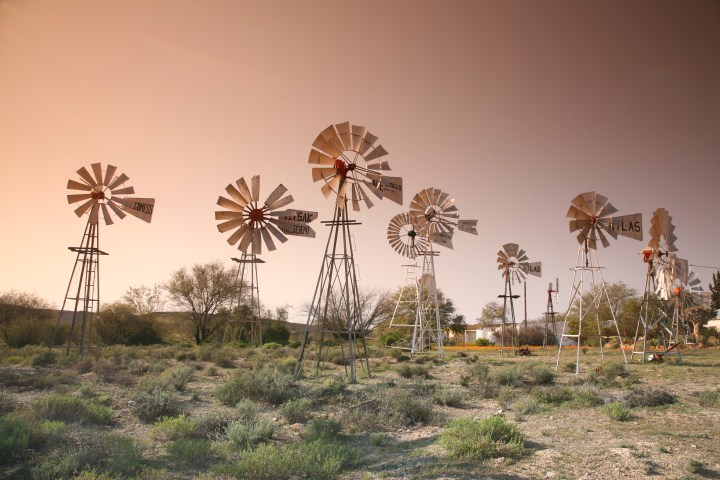
If you are ever on a lonely road in the Great Karoo at sunset, find the nearest windpump and stop beside it.
In the far distance, you may hear the call of the blue crane. From a nearby hill comes the raucous good-night bark of the baboon. Right here, next to you, fresh water gurgles out of a pipe and into a concrete dam. Above you, the old Southern Cross spins as hot metal cools and contracts. Meerkats pack their pups away for the night.
And then a monster truck comes thundering past, bedecked from stem to stern with colourful Mexican cantina lights, knocking your sundown reverie for six. Welcome to the Heartland.
The sight of a windpump anywhere in the world will always remind Karoo lovers of the vast open spaces between Oudtshoorn and the Orange River. You think lamb chops, Victorian houses, craggy mountain ridges, dirt roads, donkey carts and the book-ends of a day. There’s always a snaggy-toothed old windpump around somewhere to hold the landscape together.
Life in this arid zone is all about the water. Windpumps are the great matchmakers between the sky, the land and the aquifers beneath it. It is profoundly satisfying to watch them pinwheeling above the veld, the steady spin of the flashing blades driving the rods up and down, cylinders lifting a cupful of liquid at a time, over and over. Maybe it’s also the sound – the metallic sigh of the gears and the creak of the windrose turning into the evening breeze, the soothing whirr of the vanes, the blessing of water splashing into a round dam.
The windpump is a beautiful, functional, life-bringing machine, as mesmerising as a steam locomotive chuffing across the veld. For better or worse, it has changed the fortunes of the Karoo forever.
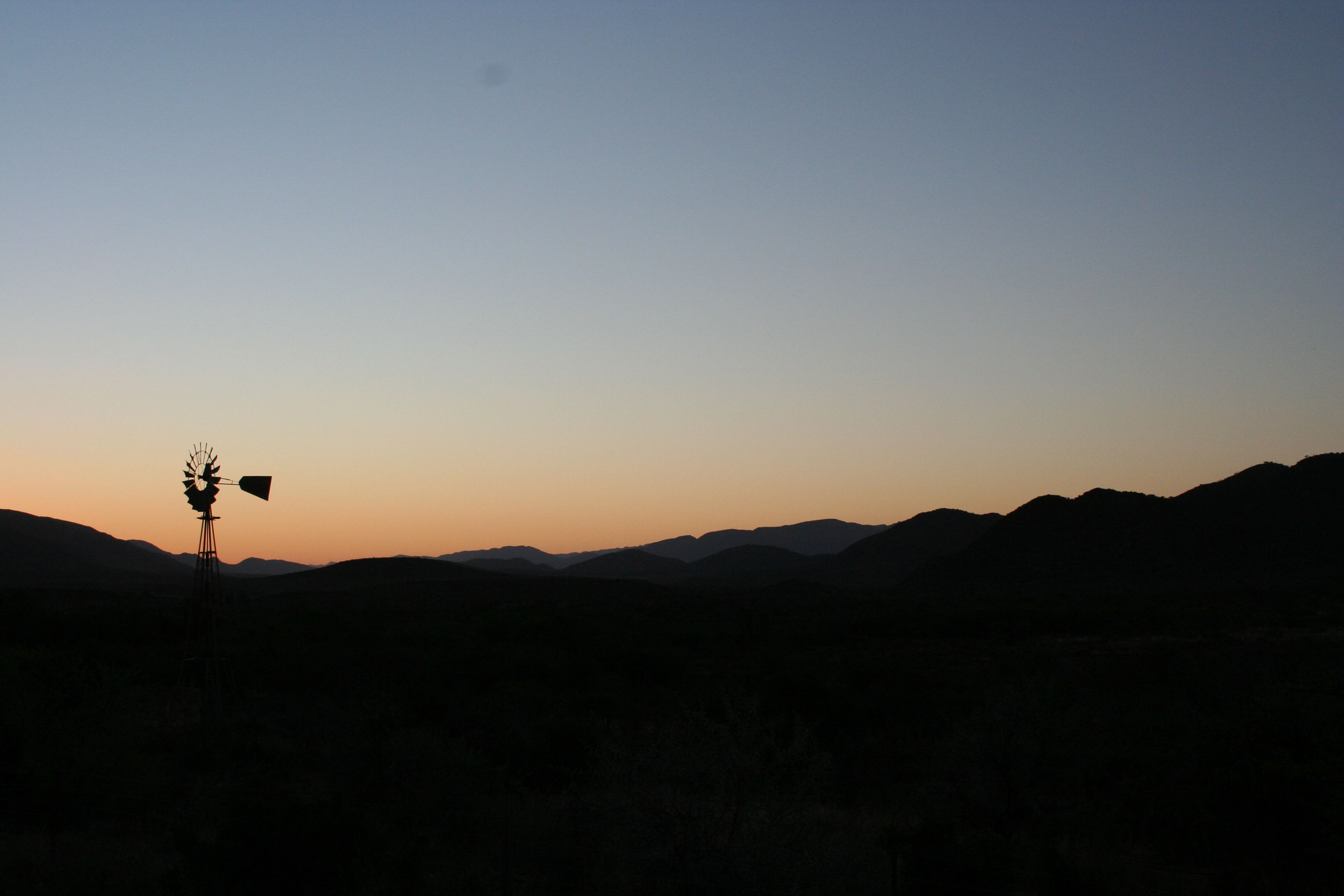
Windpumps are the connectors between sky, earth and water. Image: Chris Marais
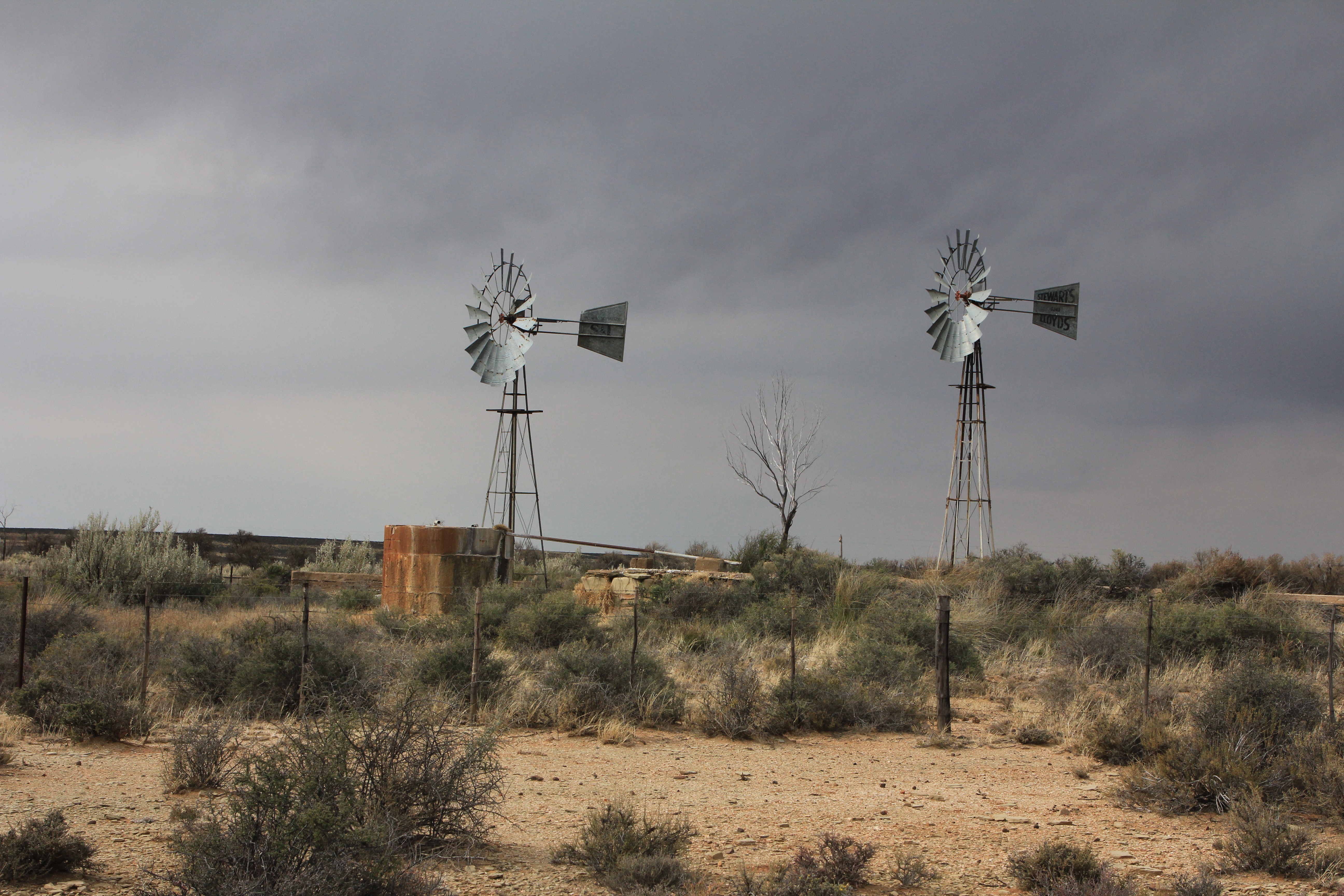
A brace of windmills in the dry Upper Karoo. Image: Chris Marais
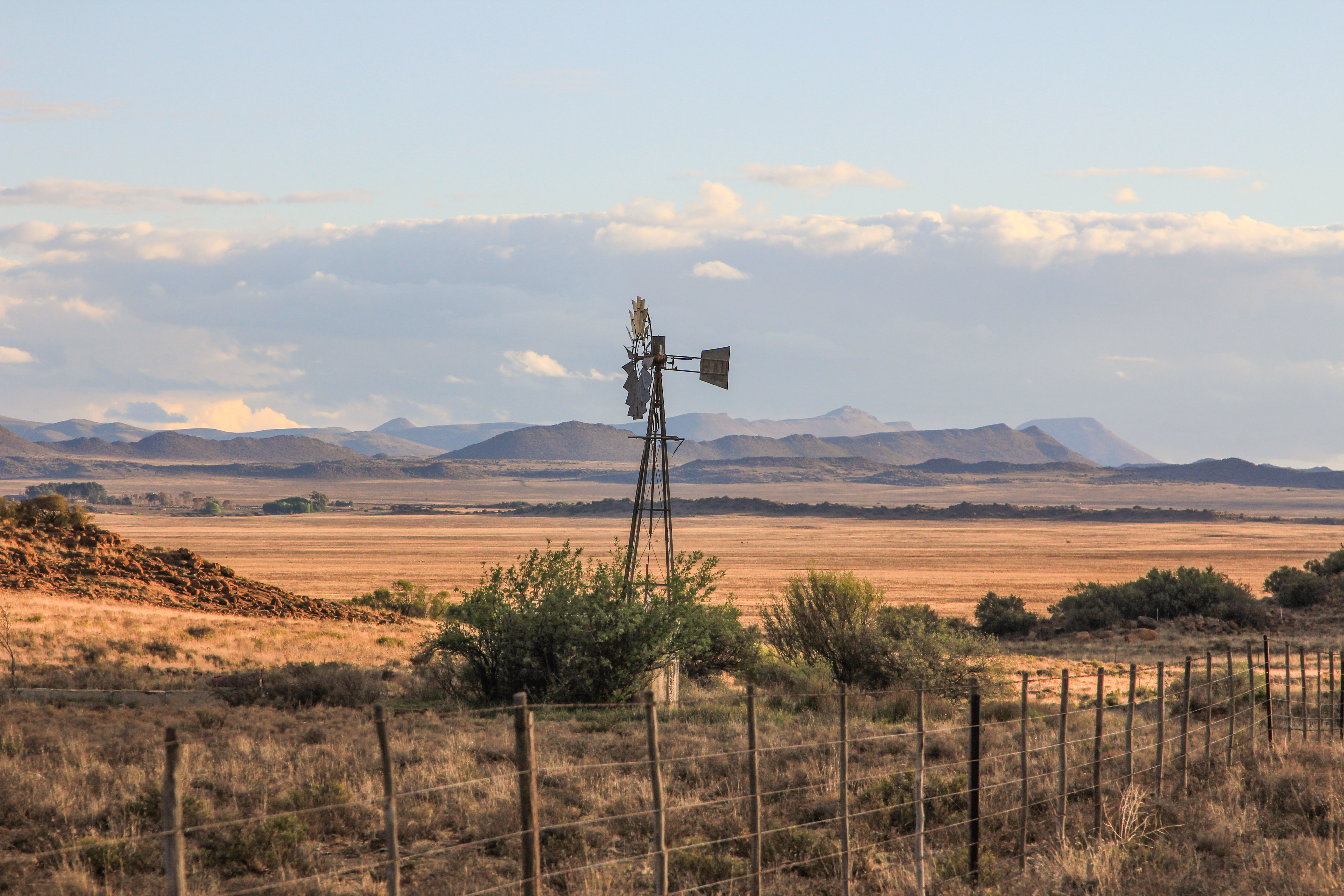
A typical Karoo scene, held together by the windpump. Image: Chris Marais
Loeriesfontein’s Windpump Museum
There is no better starting point to explore the history of the windpump in South Africa than Loeriesfontein in Namaqualand. More than 30 old windpumps arrayed there twitch and groan in the wind, straining at their chains outside the Fred Turner Museum.
Their rudder-like steel tails proclaim many brand names that have passed into memory: Gearing Self-Oiled, Ace, Atlas, Massey Harris, Conquest, Hercules, Spartan, Vetsak President, Gypsy Wonder, Springbok, Mogul, Eclipse, Malcomess, North, Beatty Pumper, Nimric, Dandy and nearly a dozen more.
There are two other windpump museums in the world. One is outside a town called Foremost, in Canada’s Alberta province. The other is in the US, where 53 specimens stand tethered outside the Mid-America Museum in Kendallville, Indiana.
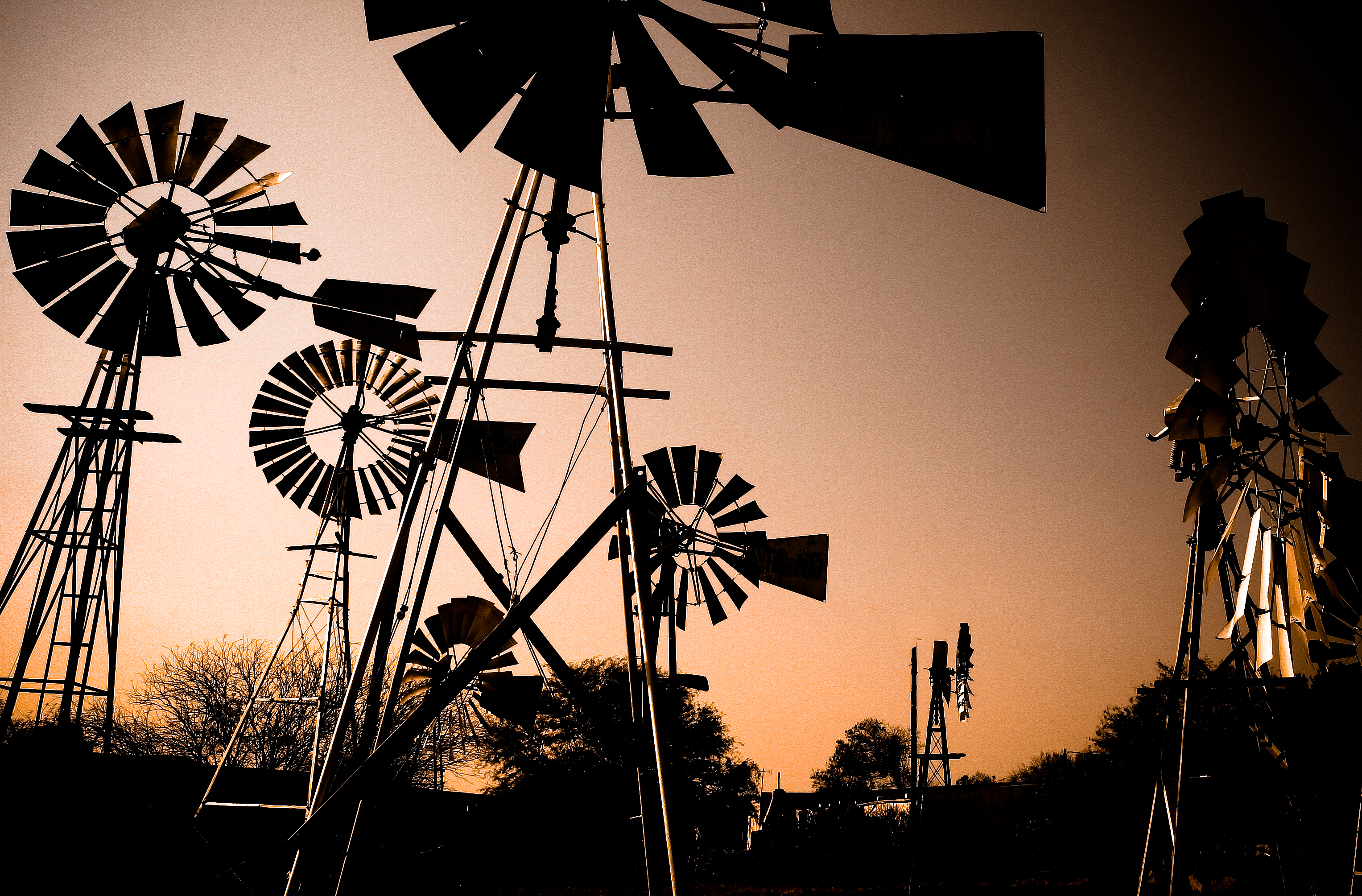
South Africans began to produce windpumps during World War II. Image: Chris Marais
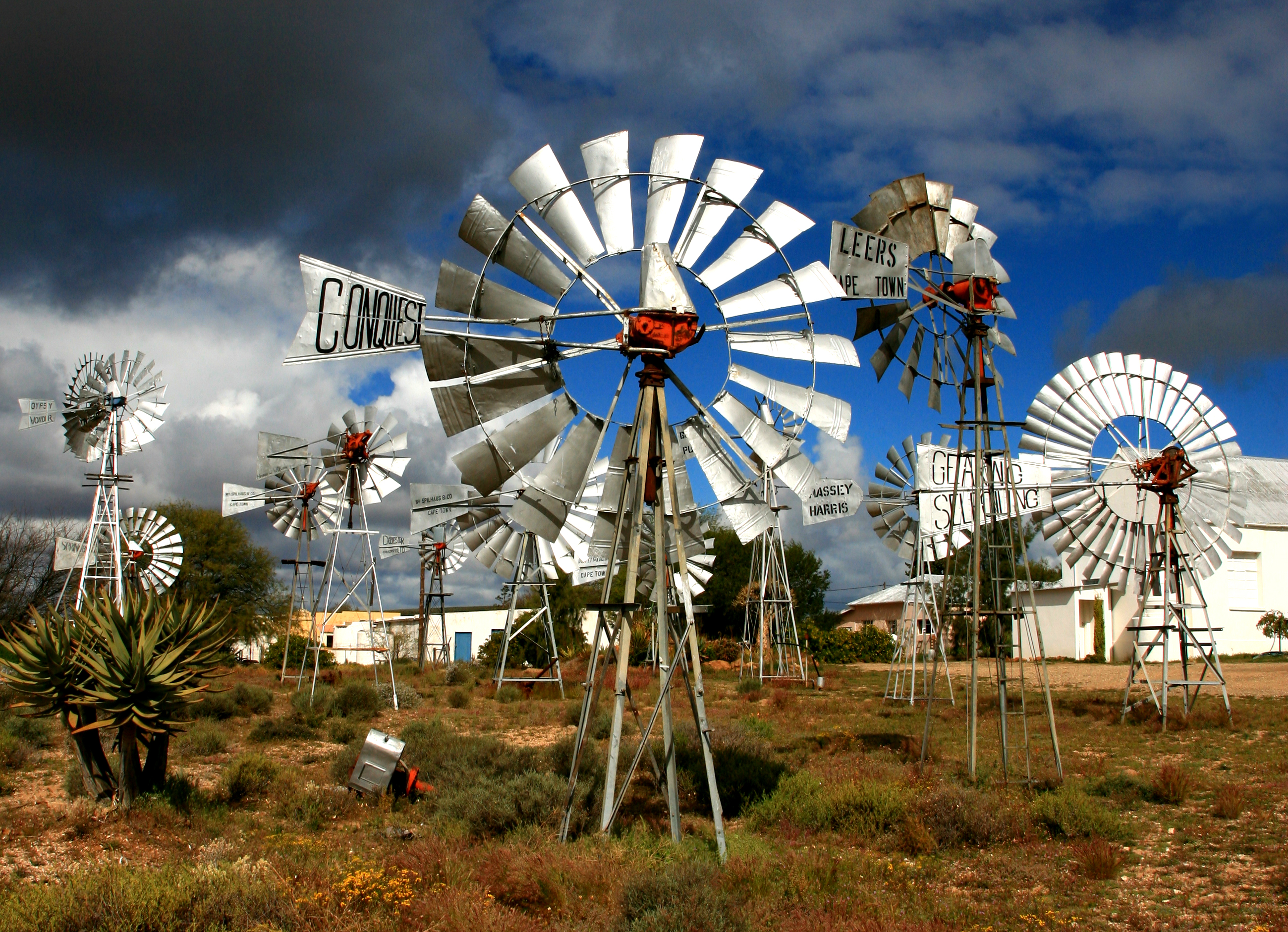
At Loeriesfontein’s Windpump Museum, old brands shine again. Image: Chris Marais
James Walton, a leading light in vernacular architecture, was the reason there is a Loeriesfontein windpump museum at all. In 1996, he’d written a series of articles on windpumps for a weekly supplement to Die Burger newspaper, and among them had issued a plea that a museum be set up somewhere to preserve them. Loeriesfontein was the only town to respond, as recorded in his book Windpumps in South Africa, written with the collaboration of Andre Pretorius. Published by Human & Rousseau in 1998, the book was unexpectedly popular and went swiftly out of print.
Walton died in 1999, and the windpump book, his last of several on South Africa’s built environment, was never reprinted. It contains a comprehensive history on the subject, as well as deep technical detail on the various makes. If you can track one down, snap it up – it’s a treasure.
Trekboer days
The trekboers were subsistence livestock farmers who moved from the Dutch-colonised Cape into the Great Karoo from around 1760 onwards. They competed directly for water and grazing with the indigenous Khoi pastoralists and the nomadic San Bushman hunters. Life in this arid land was a restless business of constant shifting between water-points and rainstorms.
Reliable springs were prized and well-known, which is why so many place-names in the Karoo and Kalahari describe the quality and nature of the water: Modderfontein (Muddy Spring), Soetfontein (Sweet Spring), Bitterfontein (Bitter Spring), Brakdam (Brackish Dam) and Geelvlei (Yellow Marsh).
In these parched lands, farmers dug wells and devised ways to raise groundwater. Some methods were as simple as lowering and lifting a bucket on a rope. Others were a little more complex, involving a wooden roller over a well, cranked to raise a bucket of water at a time.
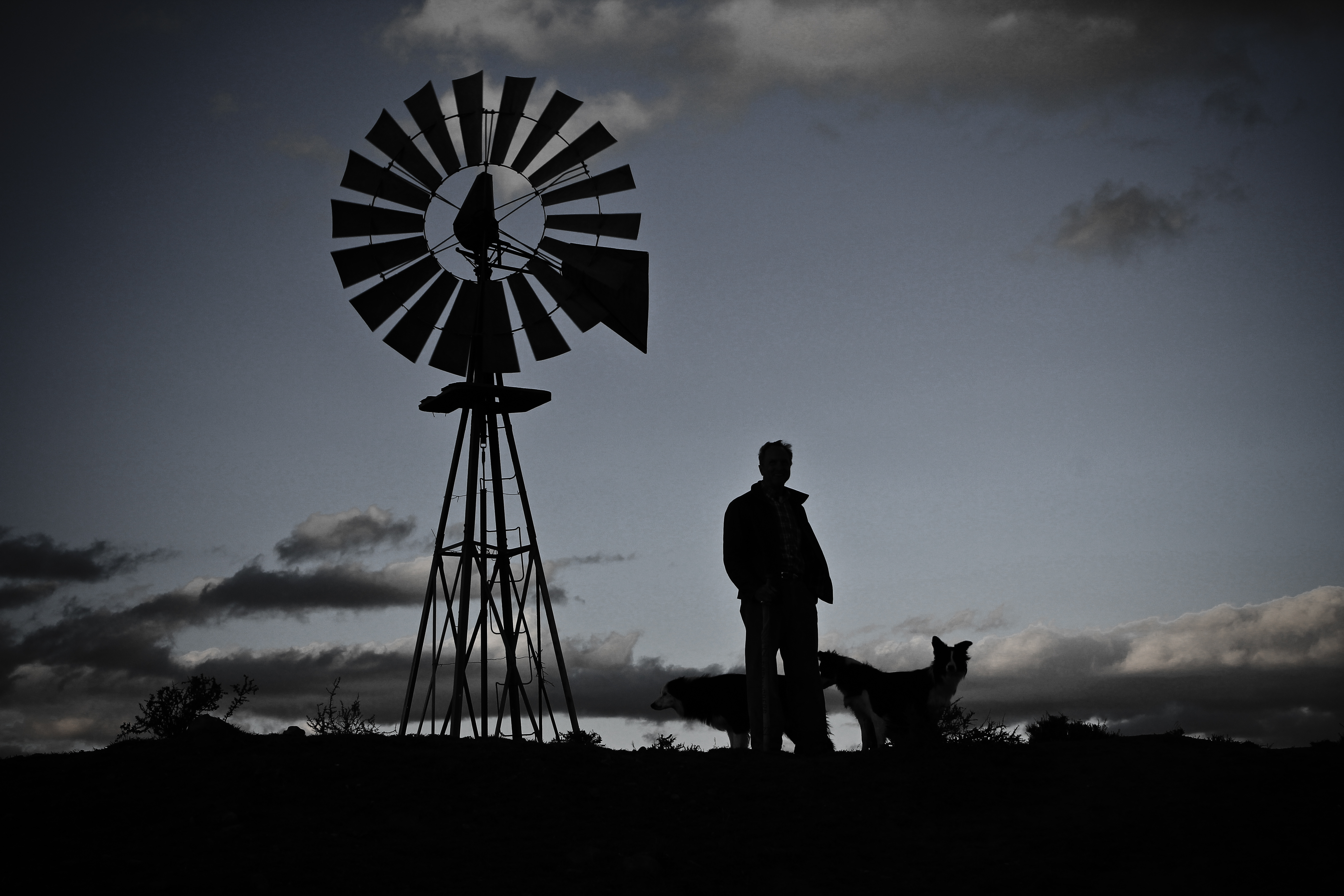
Farmers, Border Collies and windpumps – icons of the Karoo. Image: Chris Marais
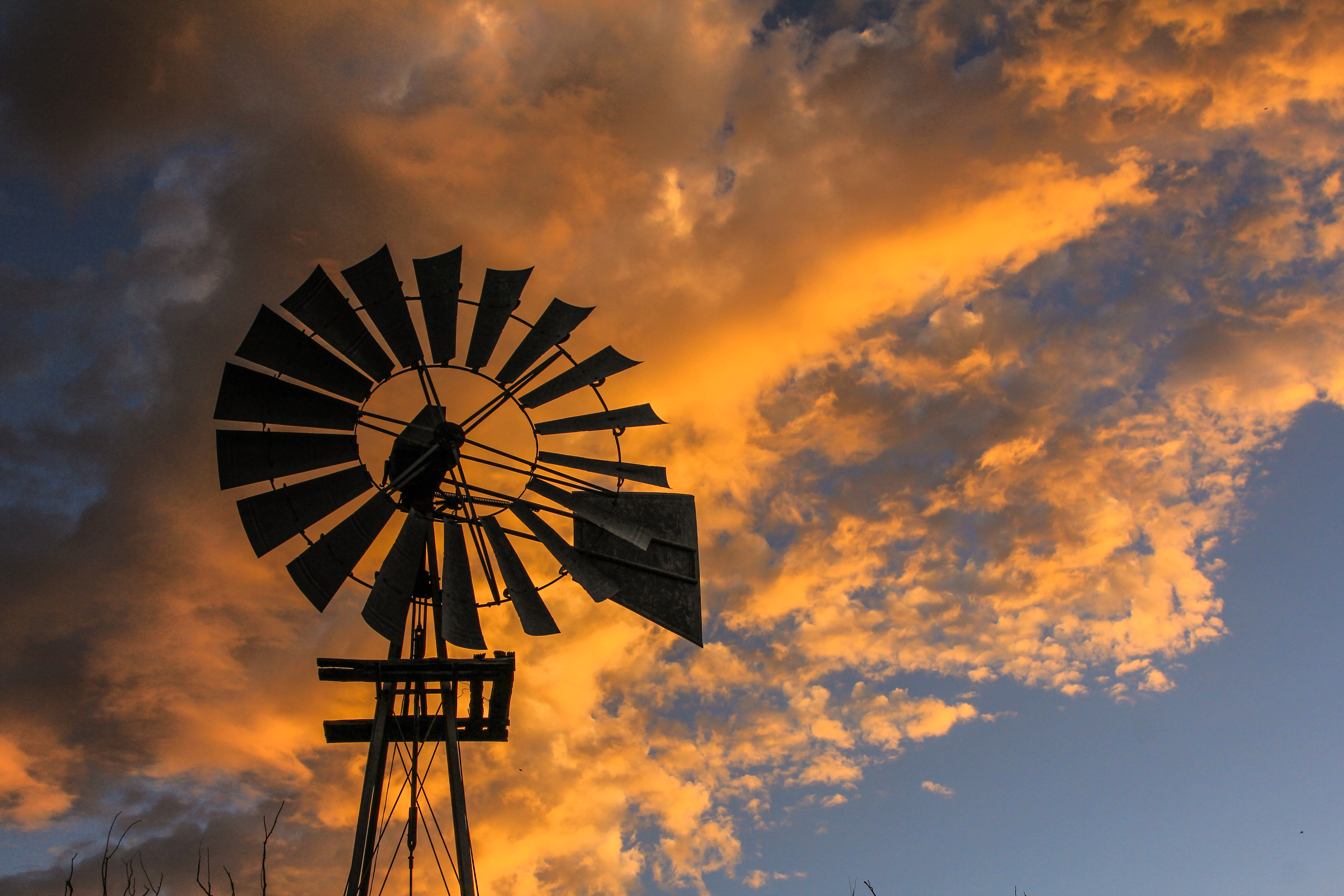
Call them windpumps or windmills – they still work the same. Image: Chris Marais
One of the more successful innovations was the bakkiespomp (bucket pump). Adapted from Indian technology, this simple machine ran on animal-power. Donkeys, mules, horses or oxen were yoked and walked round and round to raise the water via an ever-revolving wheel of buckets that tipped the liquid into a channel or trough. A statue in Upington commemorates the importance of the donkey and the bakkiespomp in settling the Kalahari.
Whenever you see them…
Aermotor steel windpumps were first manufactured in Chicago, Illinois, in 1888, and South African farmers were bewitched by them.
Their slogan was unforgettable: “Wherever you go you see them, whenever you see them they go.”
Although not unique to Aermotor, one of its great innovations was the oil bath in which the crank gears were part-submerged. This meant they were continually lubricated and the oil only needed changing once a year.
For many decades, Aermotor and other American brands supplied 80% of South Africa’s market, while British brands like Climax accounted for the rest.
Stewarts and Lloyds, who had been agents for Climax windpumps for many years, began manufacturing them under licence in Vereeniging. Similarly, Southern Cross Industries in Bloemfontein made a popular brand of the same name. Today, it’s usually Climax, Southern Cross or Aermotor windpumps that are still found whirring and swinging on their towers above the Karoo veld. But there are a few older models still out there, still working.
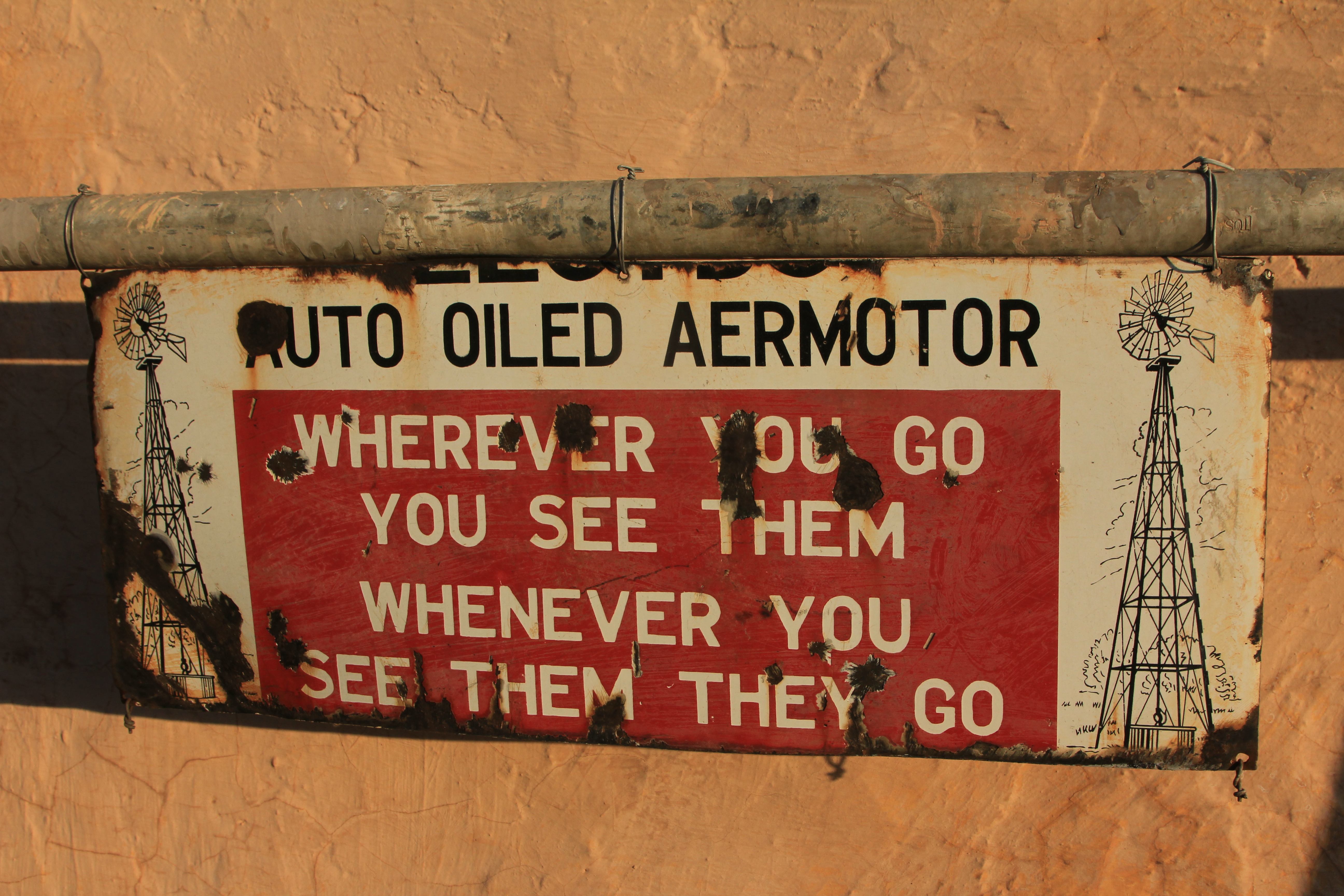
The famous Aermotor motto, in ancient enamel on a Karoo farm. Image: Chris Marais
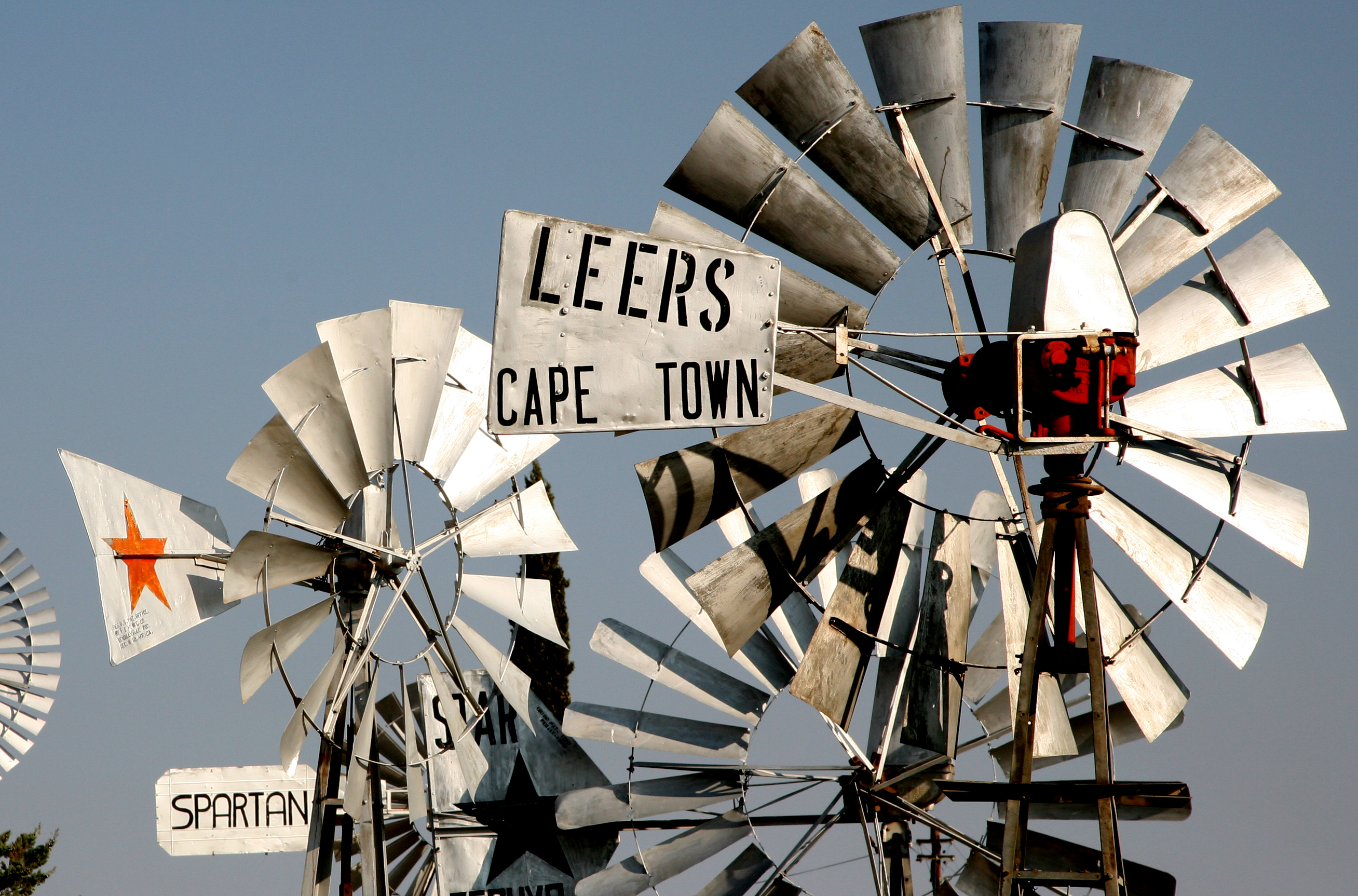
In the thrifty drylands, if it works, it stays. The Karoo remains a stronghold of windpumps. Image: Chris Marais
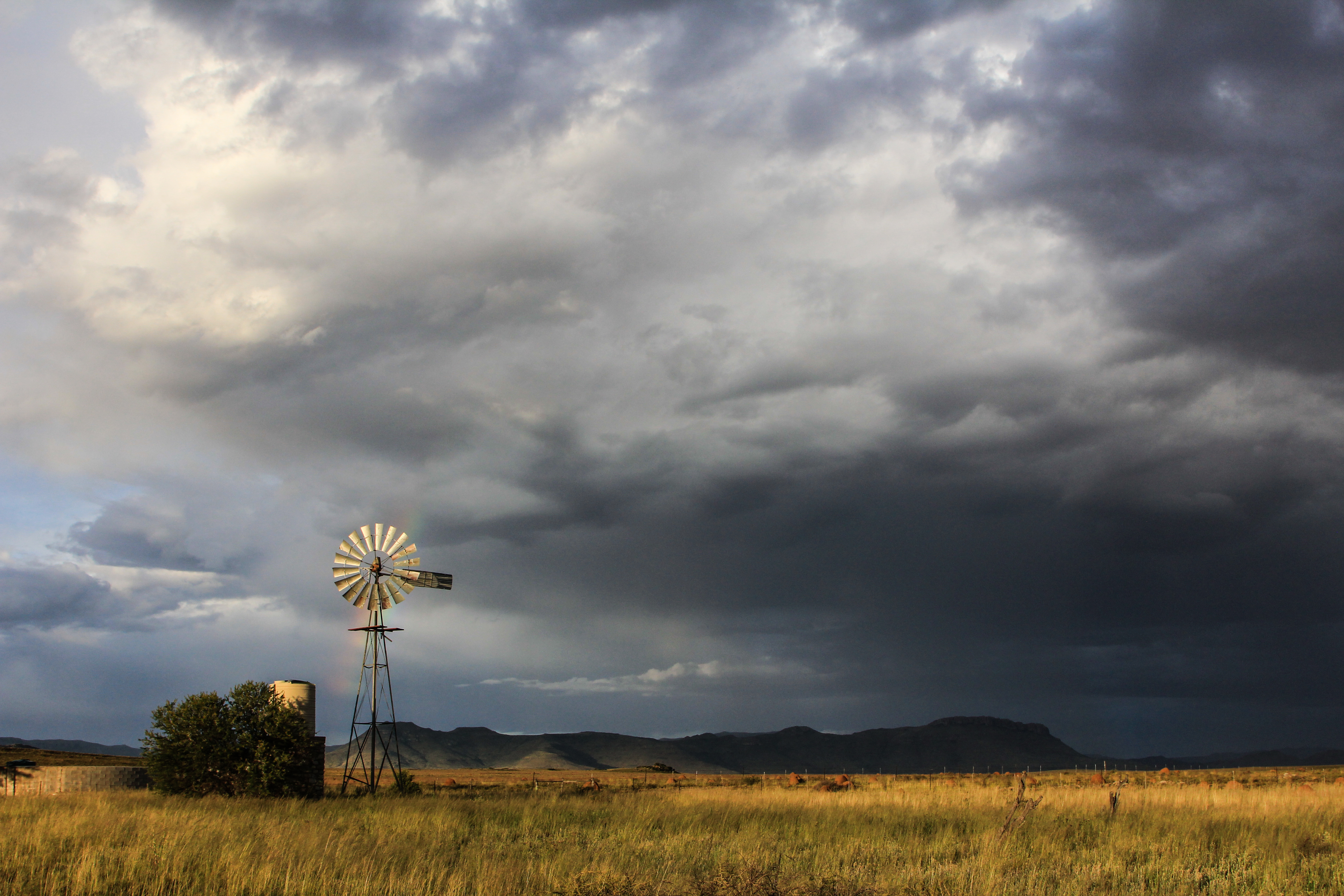
Windpump landscape on Hillston Farm, Middelburg, Eastern Cape Karoo. Image: Chris Marais
Spinning wheels at a cost
Windpumps had a massive effect on South Africa’s arid zone. More water – and, later, fences – meant more livestock could be raised on the mostly fertile soils of the Karoo and Kalahari. The Karoo now supplies a third of South Africa’s protein, a quarter of its wool, most of its mohair and an increasing array of crops, from walnuts and pecans to olives and pomegranates.
But it has come at a cost. Over the past century, there have been waves of overstocking the land with sheep, goats and ostriches. Although farming methods have largely improved over the past few decades, the Karoo veld still bears the scars of overgrazing and erosion.
In Oom Leon’s workshop
In the course of a 50-year career, Leon Swanepoel of Carnarvon has worked on nearly every kind of windpump that ever drew water in the country – specifically those around Carnarvon, Brandvlei, Vanwyksvlei, right across to Calvinia, Victoria West, Vosburg, and even Graaff-Reinet. His favourite machine is a Climax for its endurance and dependability, but he respects the others and their quirks. The oldest one he ever tended to was a venerable Defiance Butler Oilomatic, still spinning after more than 70 years.
“Do you think a solar pump would ever last that long? I doubt it.”
In the workshop, pump gears, heads and blades lie in controlled chaos, with spring-rods and valves in labelled boxes. When parts are unavailable, they are fashioned from scratch at the ever-busy lathe. The place is like a mash-up of a metal art studio and a nursing home for old windpumps.
Farmers wander in and out, drinking coffee with Cremora and chatting with Swanepoel or his wife Alida behind the counter. When he answers the telephone, he generally ends the conversation scowling ferociously. Most Karoo farmers know how to do basic repairs on their machines, so if someone calls with a “big problem”, it’s normally an emergency.
“If a windpump delivers water to the house – for drinking, washing or flushing – and it suddenly stops turning, then it’s a serious story. Or if the one that supplies water for the livestock (skaapwater) doesn’t work, then your animals are getting thirstier and thirstier. What do you do? Now it’s my problem.”
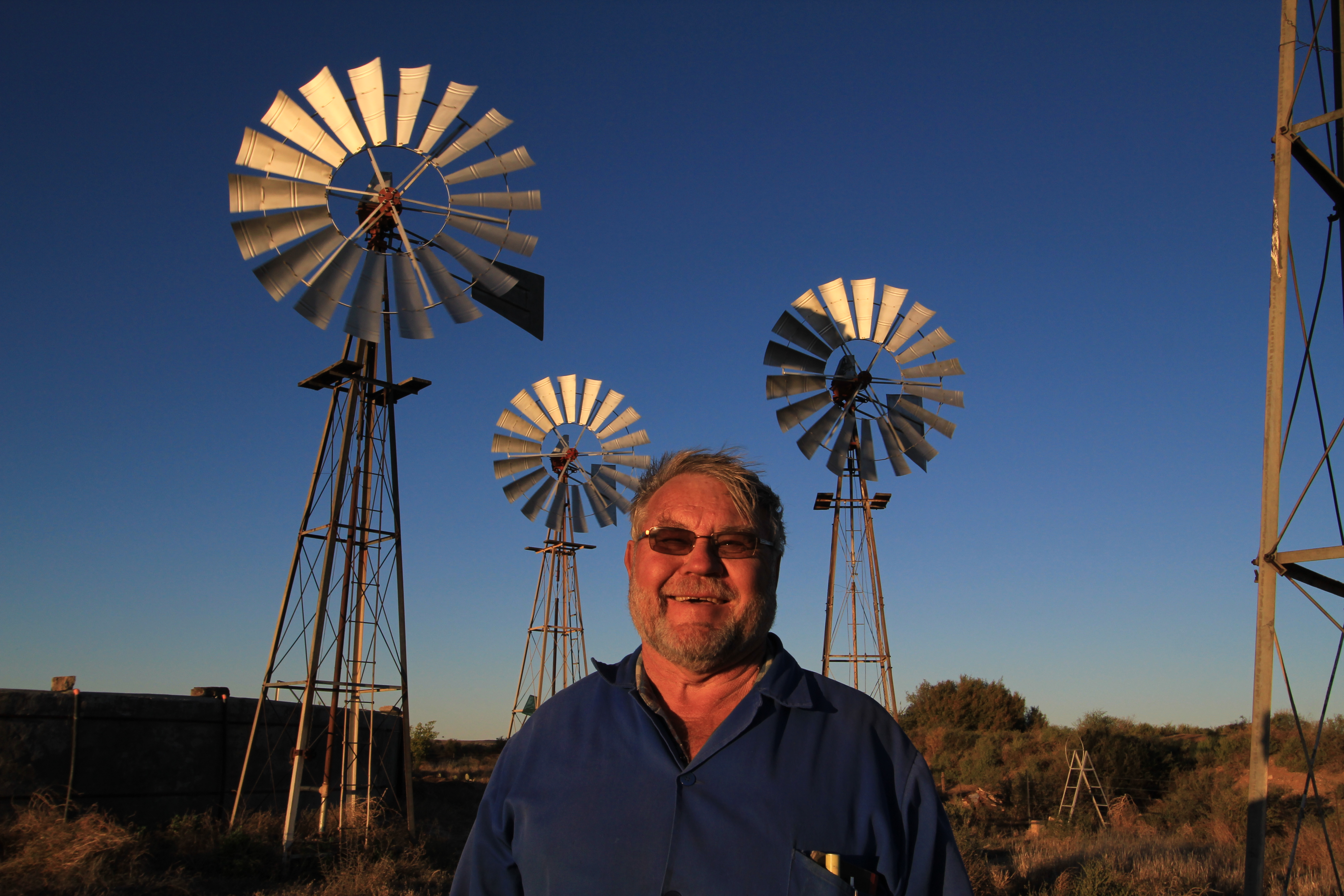
Leon Swanepoel, legendary Water Doctor of the Karoo. Image: Chris Marais
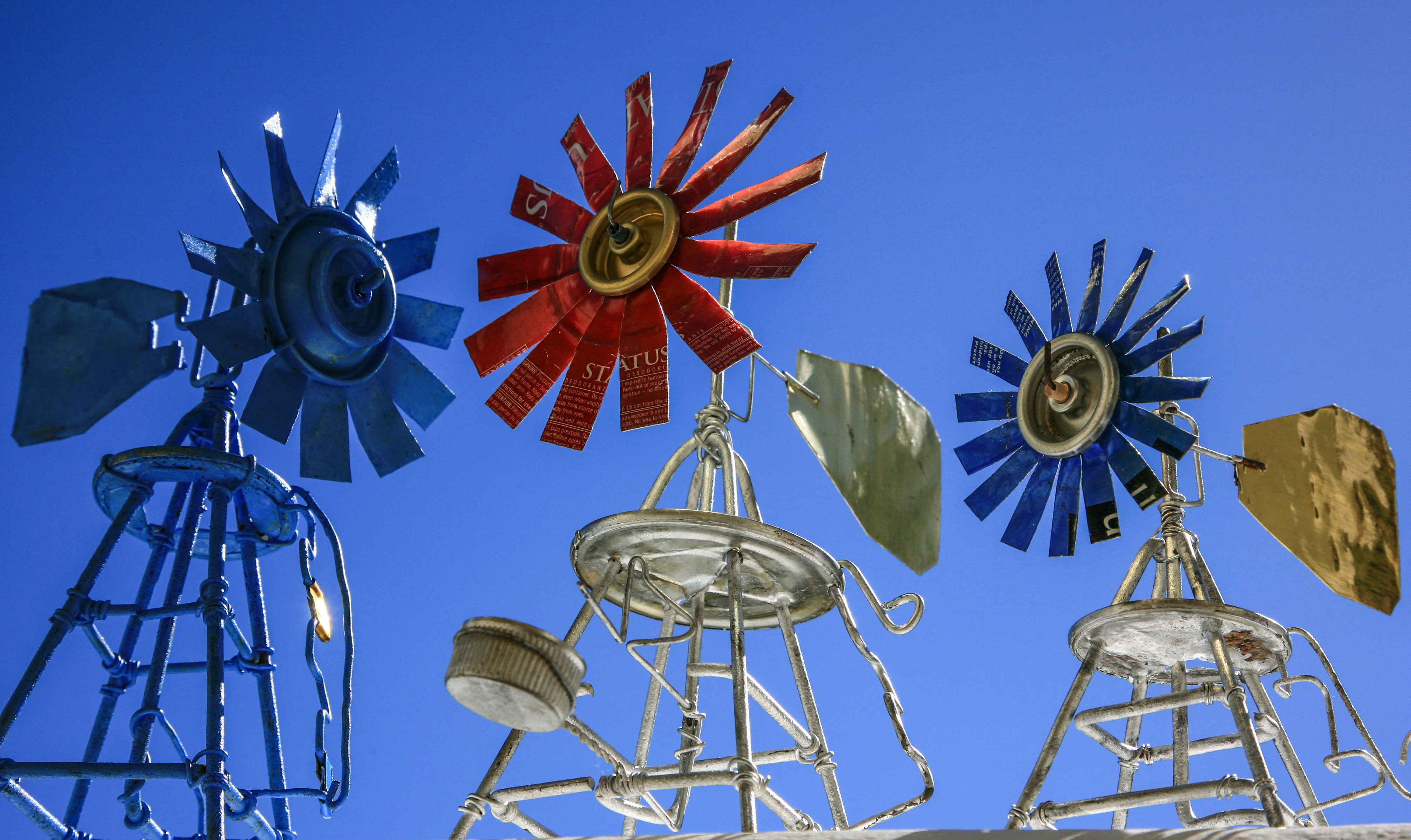
The crafters of Cradock in the Eastern Cape Karoo make their living from selling windpump replicas to tourists. Image: Chris Marais
The bane of many a farmer
Most farmers are certainly not moved to poetry by their windpumps. Balancing high above the earth on a narrow platform, surrounded by obstinate steel parts is no joke. Jan-Peet Steynberg of Ganora Farm near Nieu-Bethesda says that when one of his windpumps needs fixing, “I just hand it over to the experts and go to town for the day.”
Farmer Jaco Moolman, at Samenkomst outside Cradock, has nicknames for all of them. He calls one particular windpump Kopseer (Headache).
“It always gives me hassles. I might as well just leave a bottle of aspirins up there on its platform.”
Around sunset, one of us mentions that we’ve spent the whole day “tilting at windmills”. Moolman wants to know more about the term. So we tell him about Don Quixote and his battle to conquer the giant windmills on the Spanish plains of La Mancha.
“It means to fight an unbeatable foe. Like the song.”
There is a pause in the conversation, until Moolman quips: “Sounds just like farming in the Karoo.” DM/ ML
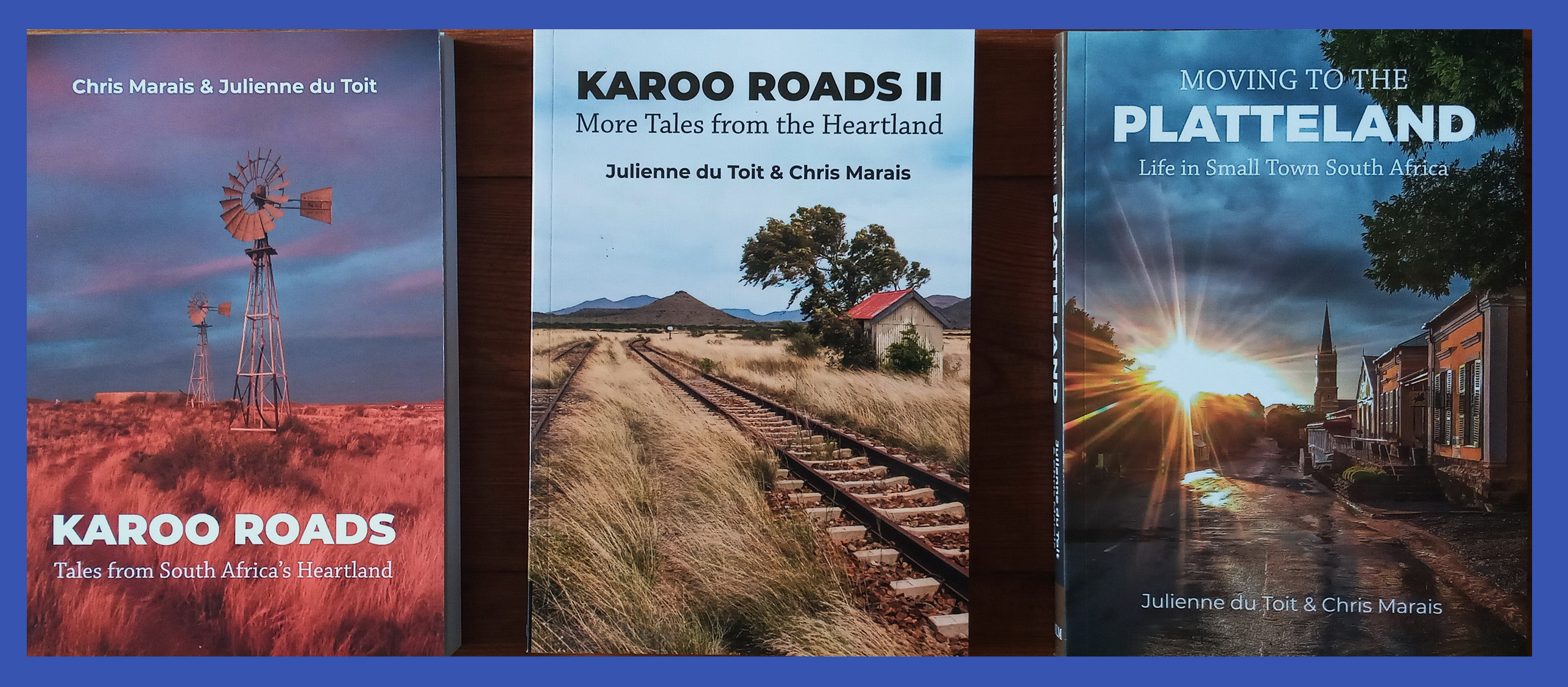
“Karoo Roads”, “Karoo Roads II” and “Moving to the Platteland” by By Chris Marais and Julienne du Toit book covers.
This is an extract from Karoo Roads I – Tales from South Africa’s Heartland, by Chris Marais and Julienne du Toit. For an insider’s view on life in the Dry Country, get the three-book special of Karoo Roads I, Karoo Roads II and Karoo Roads III for only R800, including courier costs in South Africa. For more details, contact Julie at [email protected]
In case you missed it, also read Loeriesfontein — home of the giant steel flowers


















Hi Julienne and Chris,
It would be really interesting to know what the San and Khoi names for the places named after water are.
Beautifully written piece and proof the Karoo has relied on renewable energy even before it became a thing.
This kind of writing makes you suspend your tea-cup halfway to your mouth to breathe the oxygen of a well-penned sentence. A wonderfully researched and written article. Thank you.